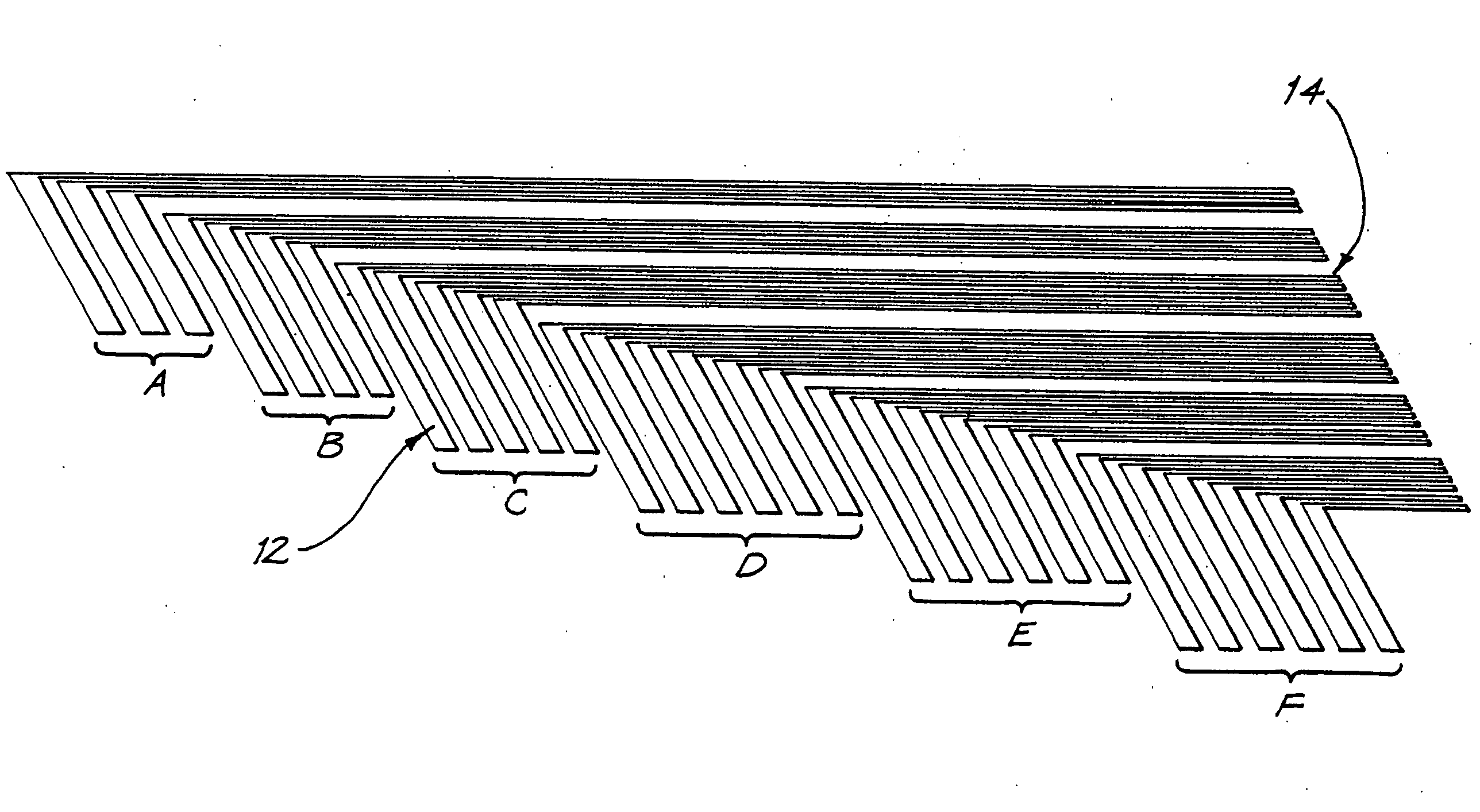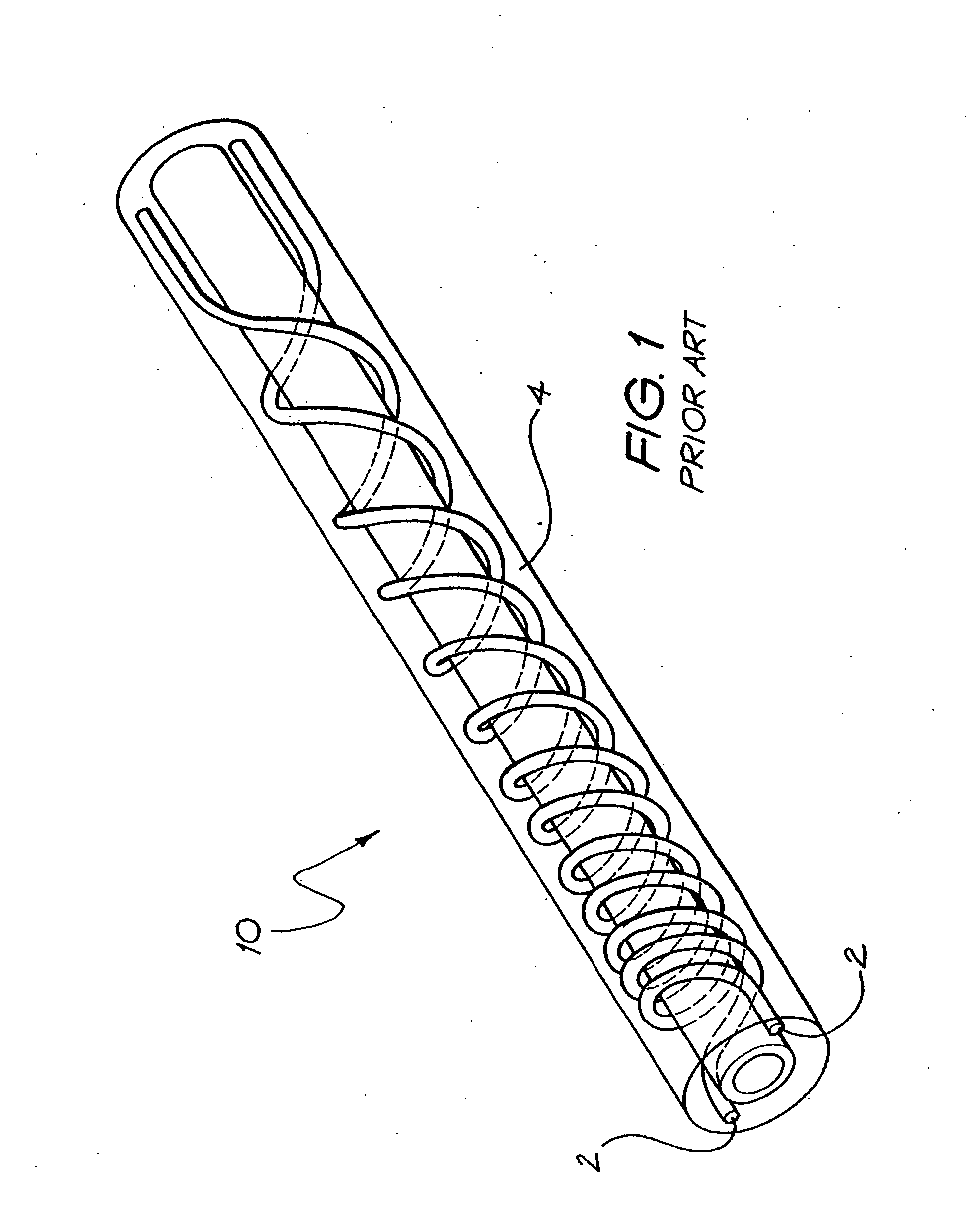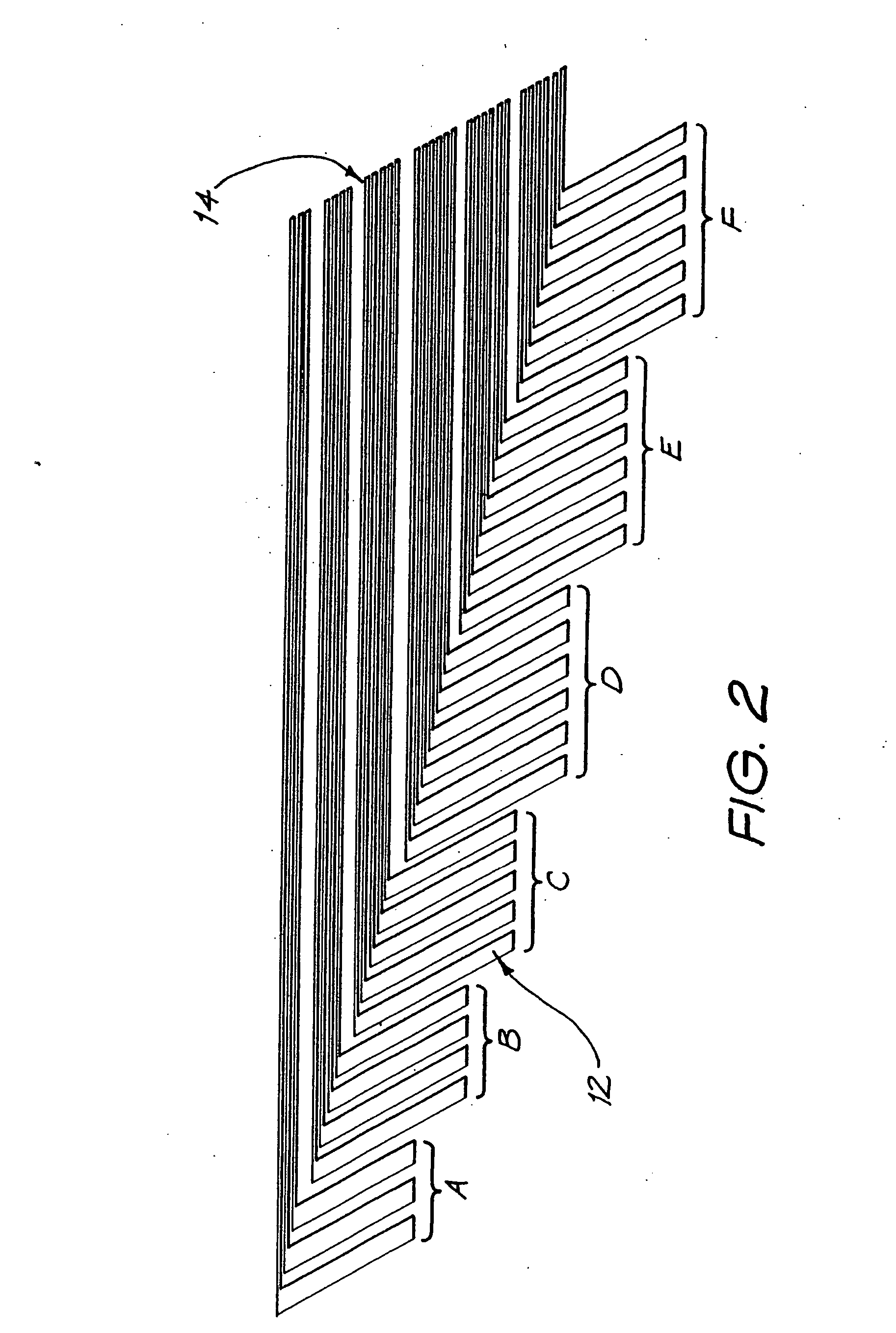Implantable conducting lead
a conducting lead, flexible technology, applied in the direction of flexible conductors, external electrodes, sensors, etc., can solve the problems of failure to act as a conductor, difficulty in sorting wires, and further exacerbated problems, so as to improve the flexibility of the lead and minimise the force on the feedthrough
- Summary
- Abstract
- Description
- Claims
- Application Information
AI Technical Summary
Benefits of technology
Problems solved by technology
Method used
Image
Examples
Embodiment Construction
[0082]FIG. 1 depicts generally as 10 one example of a conventional conducting lead that is used in implantable medical devices. This lead 10 has a plurality of conducting wires 2 extending therethrough. Each of these wires 2 can be connected at one end to a stimulator unit and at the other end to a stimulating / sensing electrode so that an electric signal can be transmitted from the stimulator unit to the corresponding electrode. The wires 2 are typically embedded in a body-compatible material 4, such as polyurethane, an organo-silicon polymer, or any other suitable non-conductive plastic.
[0083] Typically, the body-compatible material 4 can undergo some degree of extension or flex. As shown, each of the wires 2 are arranged within the body compatible material 4 in a helical manner to ensure that the lead 10 can extend without placing undue stress on the wires 2. As is shown, the pitch of the wire helix can also be altered to vary the flexibility of the conducting lead 10 along its l...
PUM
| Property | Measurement | Unit |
|---|---|---|
| thickness | aaaaa | aaaaa |
| thickness | aaaaa | aaaaa |
| thickness | aaaaa | aaaaa |
Abstract
Description
Claims
Application Information
 Login to View More
Login to View More - R&D
- Intellectual Property
- Life Sciences
- Materials
- Tech Scout
- Unparalleled Data Quality
- Higher Quality Content
- 60% Fewer Hallucinations
Browse by: Latest US Patents, China's latest patents, Technical Efficacy Thesaurus, Application Domain, Technology Topic, Popular Technical Reports.
© 2025 PatSnap. All rights reserved.Legal|Privacy policy|Modern Slavery Act Transparency Statement|Sitemap|About US| Contact US: help@patsnap.com



